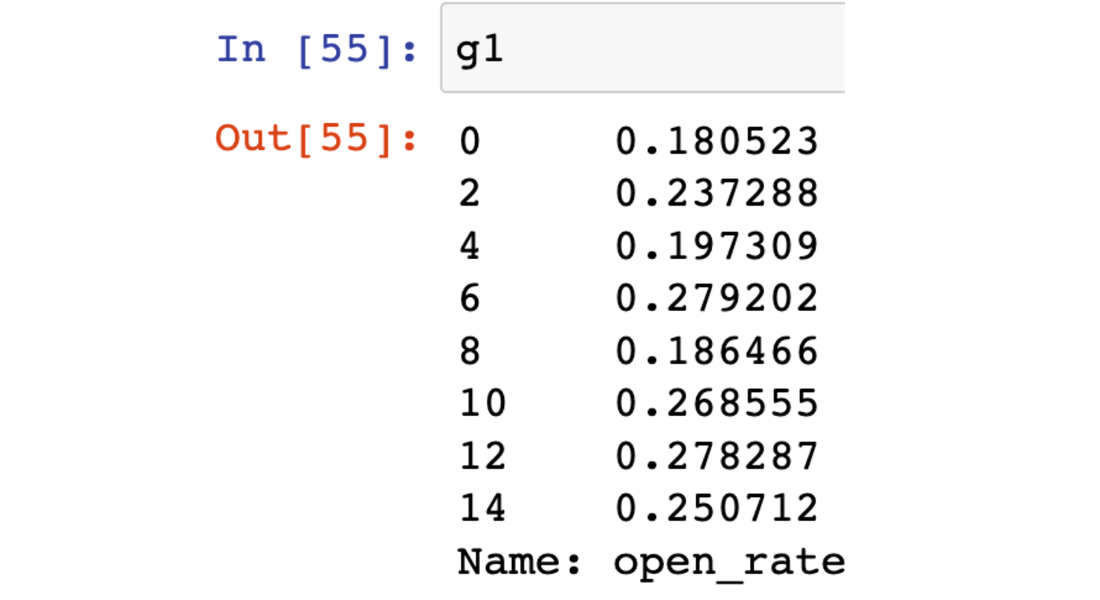BS or No BS: Long links in your emails are hurting your open rates.
By:
Evan Day
On
28/11/2023Reading time:
12 min
Summary:
a common statement that I see is that including links over 120 characters long in your marketing email can/will land you right in the junk folder, thus, hurting your open rate. That means no tracking in your Call-To-Action links, no fancy-looking buttons, no social icons, and more!
I've been digging into email open rates a little obsessively lately. I mean digging deep...like the bottom of the ocean deep...Morgan Freeman's voice deep...Your 1999 AIM away message deep (Millennials!?).
Anyway, a common statement that I see is that including links over 120 characters long in your marketing email can/will land you right in the junk folder, thus, hurting your open rate. That means no tracking in your Call-To-Action links, no fancy-looking buttons, no social icons, and more! I mean, if we don't have tracking codes or fancy-looking buttons, what do we have as marketers?
Think I'm lying? I used an awesome free tool called MailGenius to help identify issues that could be landing my emails in the junk folder. My CTA button was the first thing flagged. I suppose this makes sense because of the HTML coding needed, but come on...fancy-looking buttons! Also flagged, were all of my social icons (only Facebook is shown). I suppose for the same reason, heavy HTML is involved in the link.

Let's say you remove social icons and do away with the fancy-looking buttons (not a chance). Your Call-to-Action will still more than likely be longer than 120 characters if you include tracking. Unless you have a really short domain (lucky you).
Example, instead of having a button you could just hyperlink some text: Click Here.
So are we saying the only way to not land in the junk folder is to try to drive email responses and not actions (clicks, downloads, etc.)?
I have only one problem with this. There doesn't seem to be any concrete data supporting the claim that long links will flag your email as spam. Should we consider removing the social icons from our emails, which have the potential to boost our brand's visibility, solely based on unverified claims found on the internet? Similarly, should we eliminate the CTAs that direct people to our website? No Kelly Rowland and Nelly but this sure is a dilemma.
MailGenius.com, what's up with some data?! No? Fine, we collected some of our own. Over the last couple of weeks, my team has been running some simple A/B tests to try and get to the bottom of this.
DISCLAIMER: IF YOU'RE ONLY INTERESTED IN THE ANSWER JUST SKIP TO THE BOTTOM OF THE ARTICLE. IN THE NEXT COUPLE OF PARAGRAPHS WE NERD OUT 🤓
Now that that is out of the way...
About the test:
One group will receive an email without a link longer than 120 characters and the other will have a link with more than 120 characters in the email
The email list is randomly split into two: Group 1 and Group 2
8 different emails were sent in the dataset but each time an email was sent, groups 1 and 2 received the email at the same time.
*We did our very best to make sure the only changing variable between the two groups was whether they had a long link or not
About the data:
I hope this section will connect the dots for you all. Here is what the data set looks like. This is in Python but it should look very similar to an Excel file.

Row 0: we sent an email to Group 1 on 8/28 with a long link included (Link = Yes)
Row 1: we sent the same email to Group 2 on 8/28 (at the same time as 0) without a long link (Link = No)
Make sense? Sweet, I knew you were smart.
Form Hypothesis
Hopefully, we understand the data. Now we need to determine what question are we trying to answer...Do long links impact open rates?
If you want to get fancy, you would draft up something like this...
Null Hypothesis: The open rates of Group 1 are equal to the open rates of Group 2. In other words, these two groups are the same. AKA, we cannot say for sure that the long links matter.
Alternative Hypothesis: The open rates in Group 1 are different from Group 2. Since we know the only difference (hopefully) between the two groups is whether the email had a long link in it or not, then we can conclude that long links do matter.
Analyzing the test results
What we want to do is take all of the open rates where Link = Yes and compare it to the open rates where Link = No
Here is some code in Python but you can do this in Excel if you aren't familiar with R or Python.

Here is what group 1 looks like

Here is group 2

Perfect! Now that we have our two groups of open rates we can run a simple statistical test (don't be afraid, it's simple!) to see if the two groups are different or not. A T-Test will do the job perfectly. Not familiar with a T-Test? No worries, basically, it will tell me if the average (open rate) is the same between the two groups or different. In my opinion, you don't need to know the math behind the test, just how to set up the test and interpret the test.
If it turns out the groups are different, then we could make the assumption that long links are the cause for the difference (negatively impacting open rates or positively impacting).
If groups are the same, well, long links don't matter. Jump back up to the hypothesis section if you aren't following.
Let's run the test.

